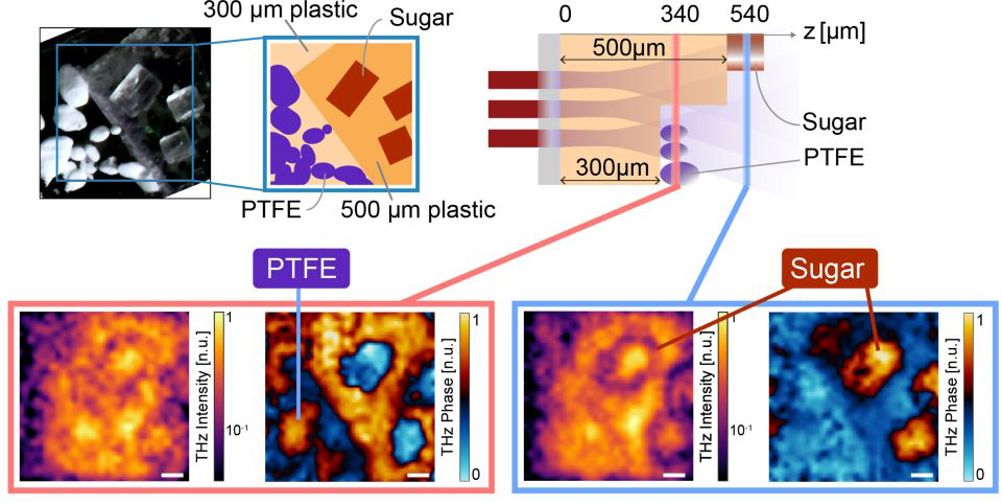Lead researcher Dr Luana Olivieri said the team's latest study – primarily funded by the ERC Horizon 2020 Research and Innovation programme – could have “major implications for a range of fields with relevance in cancer screenings, security, and materials research”.
The early-stage research, carried out with Professor Marco Peccianti, Dr Luke Peters, Dr Juan S. Totero and a team of experts from the Emergent Photonics Research Centre (EPicX), demonstrated that terahertz waves can be used to locate and recognise embedded objects and features, such as cracks and bubbles, in microscopic three-dimensional space. The study has been published in ACS Photonics.
Terahertz wave frequencies range between microwave and infrared light, making them suited for penetrating opaque objects without causing harm. However, one of the main problems in the field of terahertz imaging is the limited ability to view microscopic objects.
Dr Olivieri and the EPicX team said it has overcome this limitation by developing ‘time-resolved nonlinear ghost imaging’, which combines advanced detection methods and involves manipulating light and measuring how it travels through an object over time.
Their method allows smaller objects to be seen more clearly. Until now, it was only proven to work on 2D objects.
In their latest study, the researchers proved the technique can capture 3D images of microscopic items by probing 4mm by 4mm by 600µm cubes with terahertz radiation.
The researchers’ imaging technique allowed them to separate and distinguish information from different depths and create detailed, 3D images of the cubes with very high accuracy, which allowed them to observe the chemical and physical nature of items inside them in a way that was not possible before.

Dr Olivieri and team were able to see features hidden inside 60µm cubes. While not very small, terahertz waves can only identify objects around 300µm or larger, which was the reason terahertz was previously precluded from microscopy.
“This new approach is enabling because it allows us to see things that are too small or too obscured to be within reach of traditional methods”, said Dr Olivieri.
“Reading the story of how light has travelled through an object is often a complex task, but with this process, we can retrieve the information encrypted, unravelling the multidimensional data to unveil hidden and ‘invisible’ objects at the microscale.
“Most importantly, terahertz allows us to see through objects that are not transparent with visible light and produce 3D images.”
Dr Peters added: “In medicine, terahertz imaging could be used to detect and diagnose skin cancers that are not visible to the naked eye.
“And in materials science, terahertz imaging could be used to study the properties of new materials and identify defects or impurities that may affect their performance.
Dr Olivieri added that for security applications the technique has the potential to address concealed objects or details that are invisible to normal scanners, adding that scanners in use today are mostly monochromatic with low resolution.











McMurtry Spéirling defies gravity using fan downforce
Ground effect fans were banned from competitive motorsport from the end of the 1978 season following the introduction of Gordon Murray's Brabham...